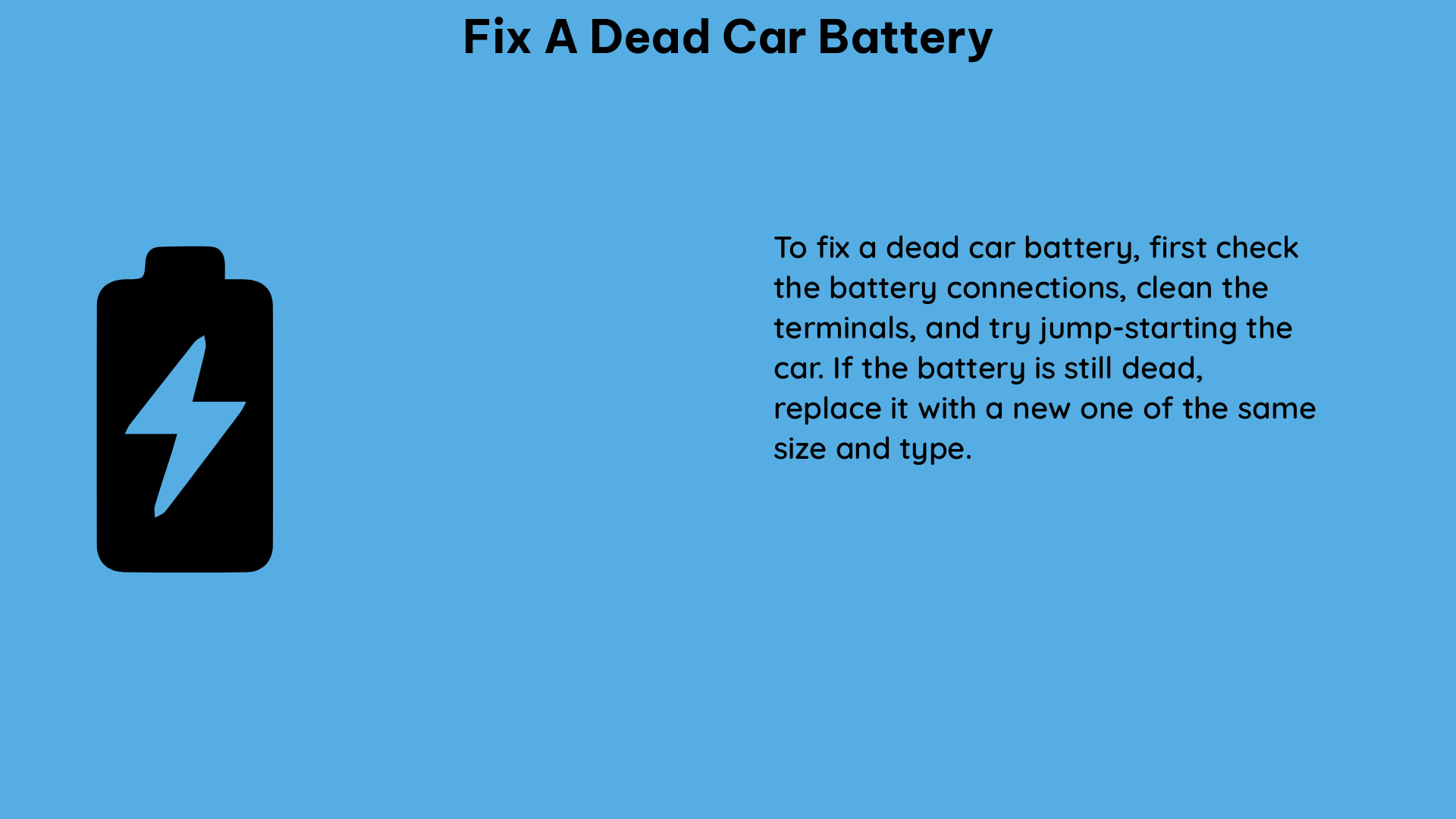Fixing a dead car battery can be a daunting task, but with the right knowledge and tools, it can be a straightforward process. This comprehensive guide will walk you through the steps to diagnose, recharge, and potentially revive a dead car battery, ensuring your vehicle is back on the road in no time.
Diagnosing the Issue
When dealing with a dead car battery, it’s crucial to understand the root cause of the problem. Several factors can contribute to a battery’s demise, including a faulty alternator, dead cells within the battery, or prolonged disuse. To diagnose the issue, follow these steps:
-
Battery Test: Take the battery to an auto parts store like Advance Auto or AutoZone for a free battery test. This test can determine the battery’s state of health (SOH), state of charge (SOC), and internal resistance, providing valuable insights into the battery’s condition.
-
Specific Gravity: Use a battery hydrometer to measure the specific gravity of the battery’s electrolyte. A fully charged battery should have a specific gravity of 1.265, and any readings below this indicate the battery may be undercharged or have one or more failed cells.
-
Internal Resistance: Measure the battery’s internal resistance using a multimeter. The internal resistance should ideally be around 5 milliohms or less for a fully charged battery. A higher resistance can indicate a problem with the battery’s internal components.
-
Alternator Check: If the battery test reveals a healthy battery, the issue may lie with the alternator. Use a voltmeter to check the alternator’s output voltage while the engine is running. The voltage should be between 13.5 and 14.5 volts, indicating a properly functioning alternator.
Recharging the Battery

Once you’ve identified the root cause of the battery’s demise, you can proceed with recharging the battery. Here are the steps to recharge a dead car battery:
-
Battery Charger: Use a dedicated battery charger to slowly recharge the battery. Avoid using a jump-start or a DC welder, as these methods can potentially damage the battery. Follow the charger’s instructions carefully, and monitor the battery’s temperature to prevent overheating.
-
Desulfation: If the battery has a significant amount of sulfation buildup on the plates, consider using a battery desulfator. This device can help remove the sulfation, improving the battery’s performance and extending its lifespan.
-
Charging Time: The time required to fully recharge a dead battery can vary depending on the battery’s capacity and the charger’s output. As a general rule, a 12-volt, 60-amp-hour battery can take up to 12 hours to fully recharge using a 10-amp charger.
-
Charge Monitoring: Regularly check the battery’s voltage and specific gravity during the charging process. Once the battery reaches a full charge (around 12.6-12.8 volts), discontinue the charging to prevent overcharging and potential damage.
Replacing the Battery
In some cases, a dead car battery may not be salvageable, and replacing it may be the best option. When considering a battery replacement, keep the following in mind:
-
Battery Compatibility: Ensure that the replacement battery is compatible with your vehicle’s make, model, and year. Check the battery’s size, terminal configuration, and cold-cranking amps (CCA) to ensure a proper fit.
-
Battery Maintenance: Implement a regular battery maintenance routine, such as getting a battery test with every oil change. This can help prevent unexpected battery failures and ensure your car is always ready to go.
-
Battery Disposal: Properly dispose of the old battery, as it contains hazardous materials that should not be discarded with regular household waste. Many auto parts stores and recycling centers offer battery recycling services.
By following the steps outlined in this comprehensive guide, you can effectively diagnose, recharge, and potentially revive a dead car battery, keeping your vehicle on the road and saving you the cost of a replacement.
References:
- Reddit Post: If my car battery is completely dead, like with a voltmeter it reads 0V, what’s the best way to get it charged up again?
- YouTube Video: How to Revive a Dead Car Battery
- Interstate Batteries Blog: Get a Battery Test

The lambdageeks.com Core SME Team is a group of experienced subject matter experts from diverse scientific and technical fields including Physics, Chemistry, Technology,Electronics & Electrical Engineering, Automotive, Mechanical Engineering. Our team collaborates to create high-quality, well-researched articles on a wide range of science and technology topics for the lambdageeks.com website.
All Our Senior SME are having more than 7 Years of experience in the respective fields . They are either Working Industry Professionals or assocaited With different Universities. Refer Our Authors Page to get to know About our Core SMEs.